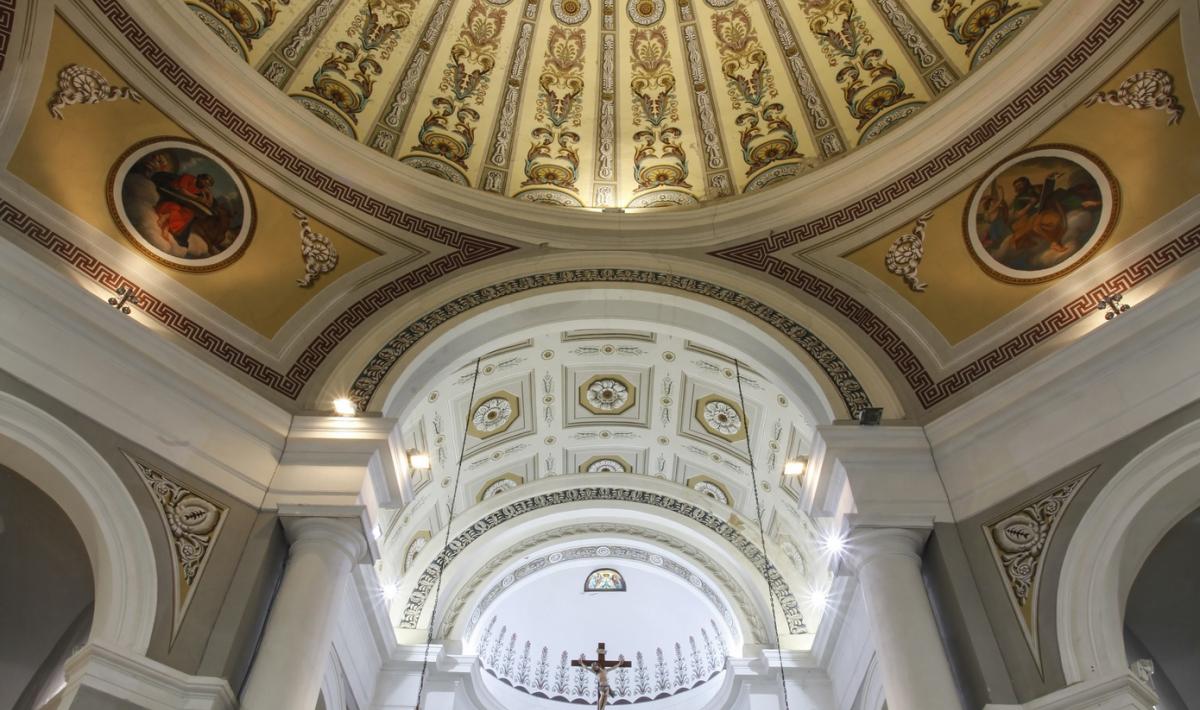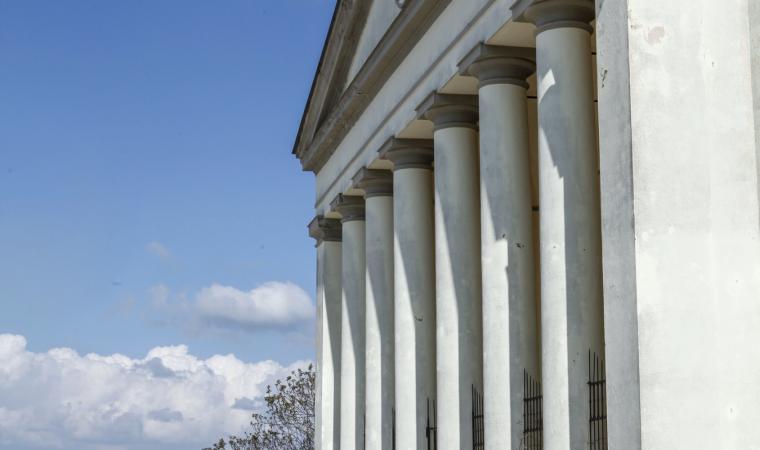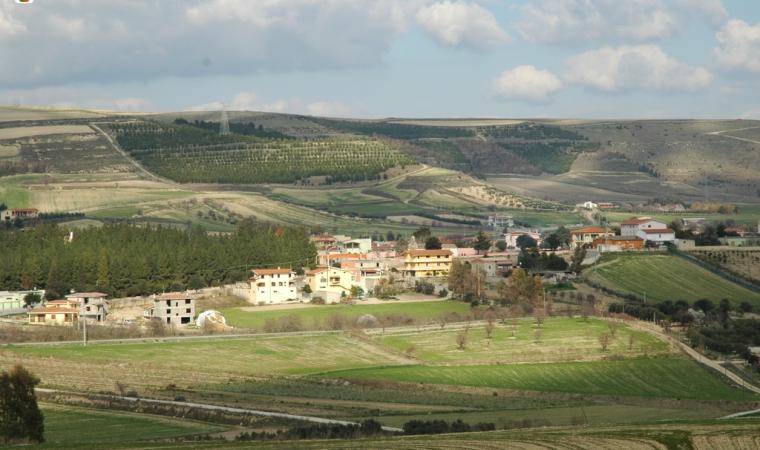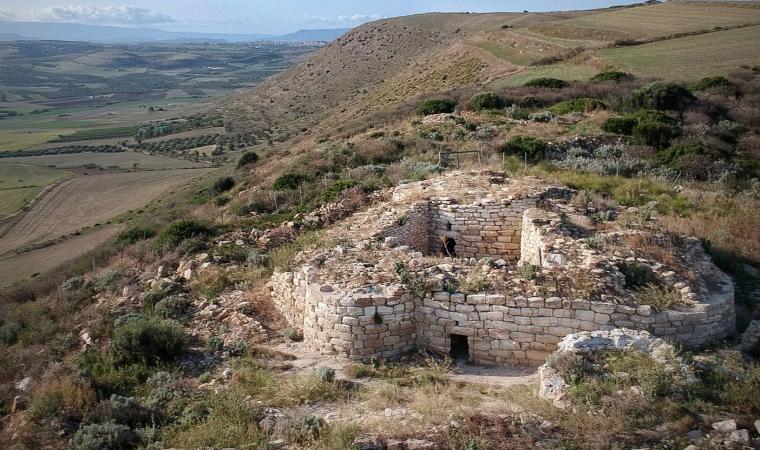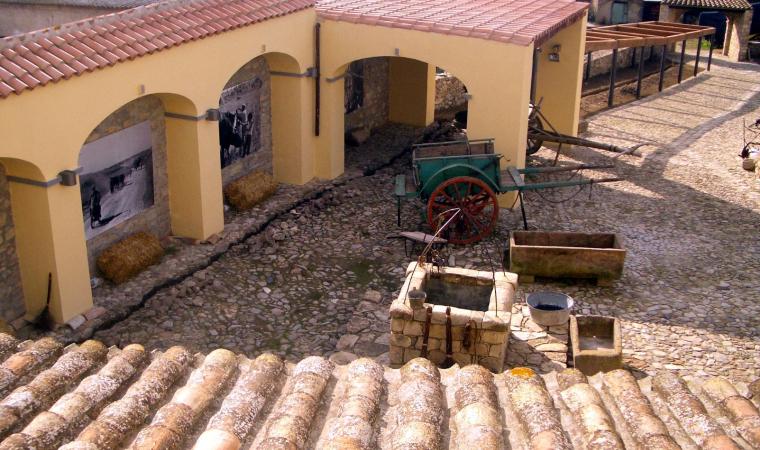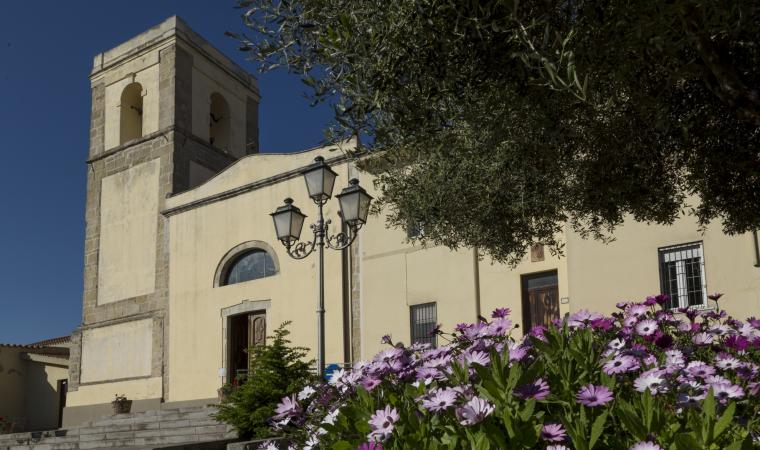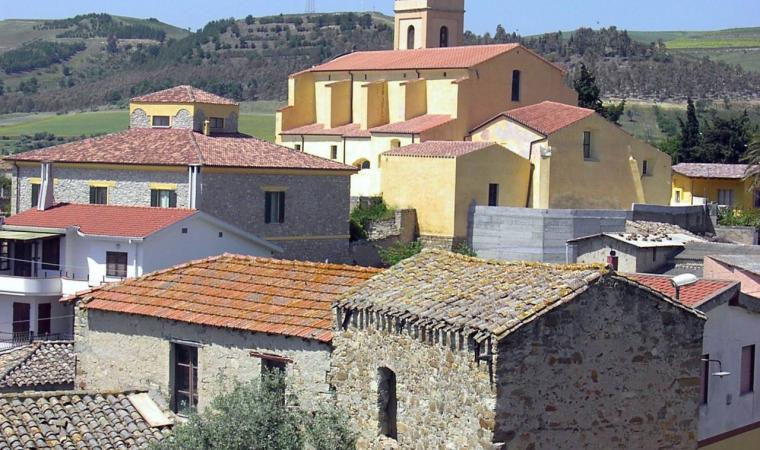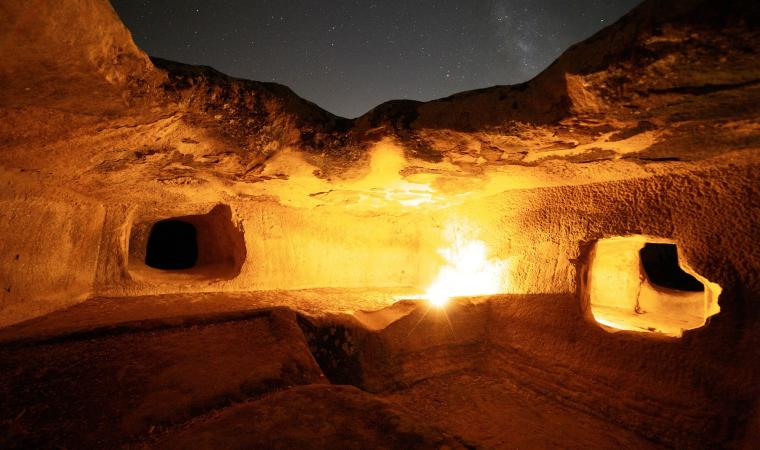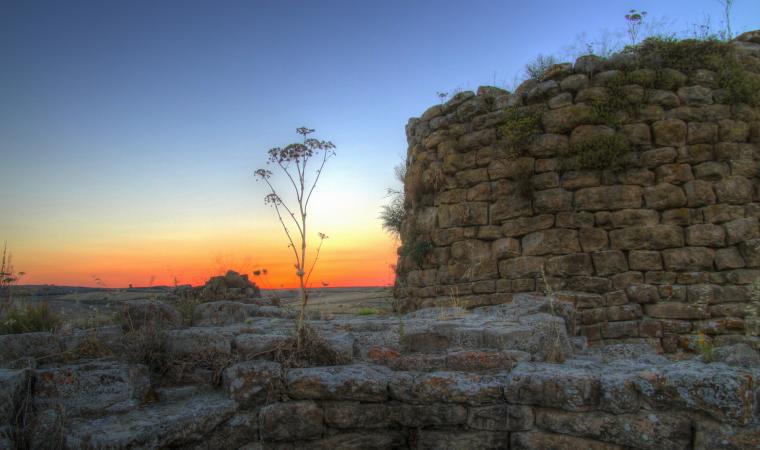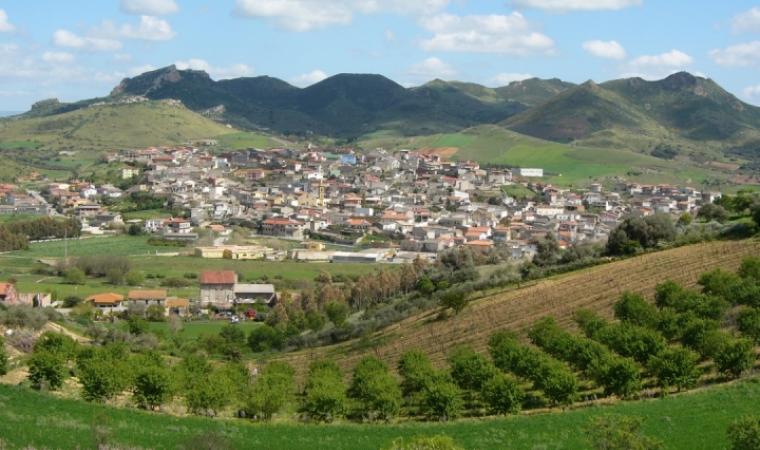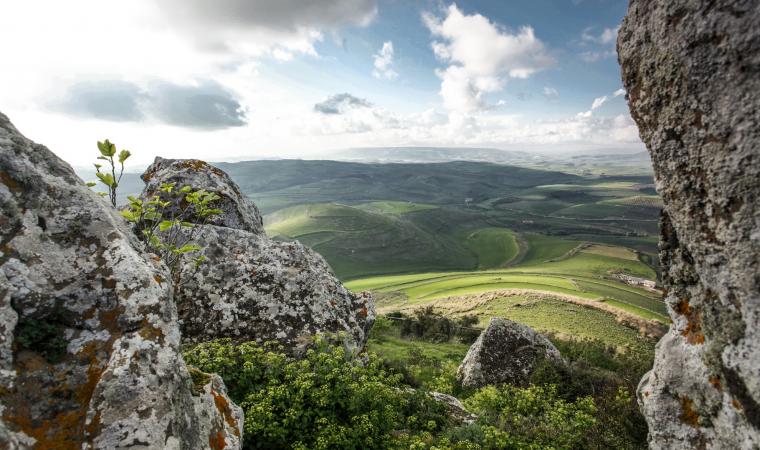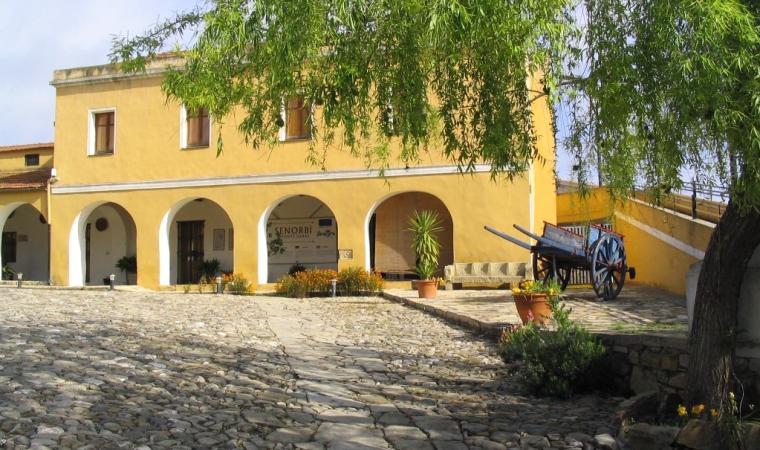The inspiration for its shapes brings to mind the Pantheon in Rome and Palladio’s architecture. It is the main place of worship in Guasila, the heart of the village, and it is a true temple with an imposing and, at the same time, elegant appearance, built in that neoclassical style so dear to its designer, architect Gaetano Cima. The Parish Church of Beata Vergine Assunta dedicated to the Assumption of the Blessed Virgin Mary was designed in 1839 but building began three years later and was completed in 1852. It has an octagonal layout and you can enter the central body through a pronaos with six Doric columns, preceded by a stunning staircase. The tympanum is supported by two corner pillars.
The building was constructed on the site of a previous place of worship; in fact, the bell tower next to the façade on the right dates back to the 18th century. Inside the church hall, you will be impressed by the domed vault, with decorations that have geometric and floral motifs stretching from the base of the dome to the centre, closed by a skylight. The walls are punctuated by eight columns and six chapels open up between them, two of which are main ones. In the first, dedicated to Santa Maria, there is a statue depicting the dormitio virginis and a simulacrum of Saint Peter the Apostle that, according to tradition, comes from the village of Sennoru, one kilometre from Guasila, that later disappeared. On the days preceding the celebration of the patron saint, the dormitio virginis is the protagonist of a dressing ritual of Byzantine origin: the simulacrum is placed on a golden bed, sprinkled with oils and perfumes and dressed in sumptuous clothes and with is prendas, jewels and a silver crown. The statue is then placed in the centre of the sanctuary. The second main chapel is dedicated to the body of Christ and contains a simulacrum attributed to Antioco Lonis, a sculptor from Senorbì active in the 18th century. The presbytery, separated from the church hall by a marble balustrade, contains the main altar made of multicoloured marble. In its central niche, you can admire the statue of Our Lady of the Assumption between two angels. At the foot of the tabernacle, the remains of Saints Primo, Engrata and Benigno are kept in a walled-in urn, placed under a black stone. Items that come from the old parish church of Guasila include a baptismal font, a holy water font and a pulpit made in the early 19th century.
On the right of the temple, built as a diocesan sanctuary in 2002, you will see the Oratory of the Rosary. Its building dates back to the 18th century, while sources report that there was already an oratory operating in Guasila in the 16th century, with the name of Obraria de Nostra Senora del Rosser. A few steps away from the church, you can admire the precious liturgical items, vestments, reliquaries and the votive offerings from the sanctuary exhibited in the museum of Scrinia Sacra, located in the rooms of the building that was once a prison, then a town hall and today a place of art and culture.

